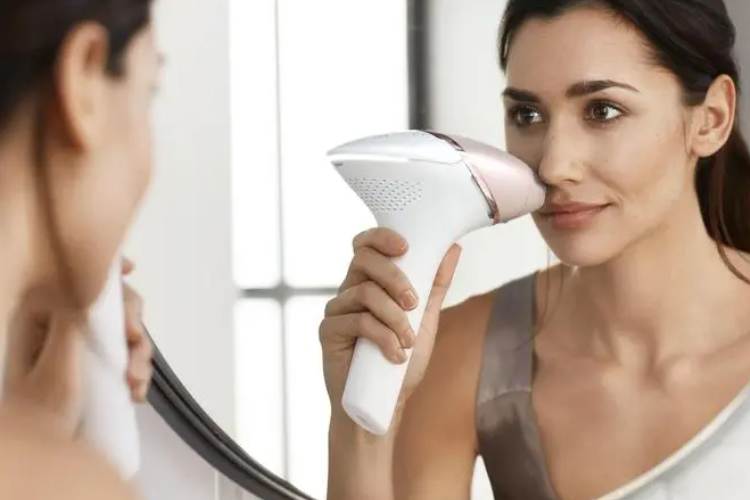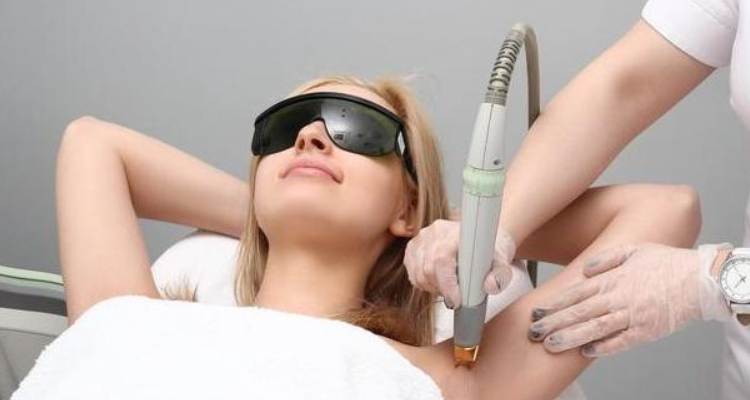
IPL hair removal devices have transformed the landscape of semi-permanent hair removal by providing a practical and cost-effective alternative to traditional laser treatments. With performance and results comparable to in-salon laser treatments, IPL devices have gained significant popularity recently.
When using an IPL device, it is advised to shave the targeted area before the treatment session, similar to the guidelines for laser hair removal. However, some brands—whose names we shall not mention—suggest that various hair removal methods can be employed alongside an IPL session.
If you’re curious about the compatibility of these methods, or if waxing or epilating beforehand is acceptable, you’ve come to the right place. We will delve into the various hair removal techniques that can or cannot be used in conjunction with IPL treatments.
Table of Contents:
Part 1: Understanding IPL Hair Removal and Its Mechanism

As previously mentioned, while IPL hair removal shares similarities with laser hair removal, it is not entirely identical. Let’s take a closer look at how IPL hair removal works.
What is IPL Hair Removal?
IPL (Intense Pulsed Light) hair removal devices are compact, at-home devices that utilize broad-spectrum light energy. Available in a wide range of options, these devices offer varying features and functionalities.
You can select a device based on criteria such as price, FDA approval, dermatologist endorsements, and the results you wish to achieve.
How Does It Work?
It's important to note that lasers operate based on the principle of selective photothermolysis, while IPL devices, despite using a broader spectrum of light, function on a similar principle. The key difference lies in the energy output of IPL devices, which is lower, making them safe and gentle for at-home use.
These devices emit light beams that specifically target pigment in the hair. When the pigment in the unwanted hair absorbs the light, it effectively destroys the hair follicles.
Part 2: Prerequisites for IPL Hair Removal

The average cost of an IPL hair removal device ranges from $400 to $600. Before making such an investment, it’s crucial to determine whether the device is right for your needs.
Let’s outline some essential prerequisites for effective IPL hair removal.
Optimal Skin Tone
IPL technology relies on the absorption of light by pigment, which means that effective treatment requires a low pigment level in your skin. Therefore, the most suitable skin tones for IPL hair removal devices are porcelain, fair, and light brown, with moderate effectiveness on medium brown and olive skin tones. However, these devices tend to be less effective on dark brown and black skin.
Compatible Hair Color
The effectiveness of IPL hair removal is enhanced with hair that possesses significant pigment, particularly brown or black. Thus, the ideal hair colors for IPL treatments include black, brown, and dark blonde. Conversely, IPL is generally ineffective on hair that is red, orange, blonde, light blonde, or gray.
Ulike Air 10 IPL
SUMMER SALE
Discover the most valuable IPL device available today.
Presence of Dark Hair Roots
As previously emphasized, the presence of hair is essential for IPL treatment efficacy. However, it’s equally important that the hair is not excessively long. Therefore, having dark hair strands of an appropriate length is crucial for optimal light absorption during IPL sessions.
Healthy Skin
While IPL devices may be compatible with sensitive skin and include additional safety features, healthy skin with an intact barrier enhances the overall results of the treatment.
Suitable Body Areas for Treatment
IPL hair removal can be effectively applied to any body area exhibiting light skin and dark hair, including limbs, the face, and sensitive areas such as the bikini line and pubic region. However, certain areas should be avoided for safety reasons.




































